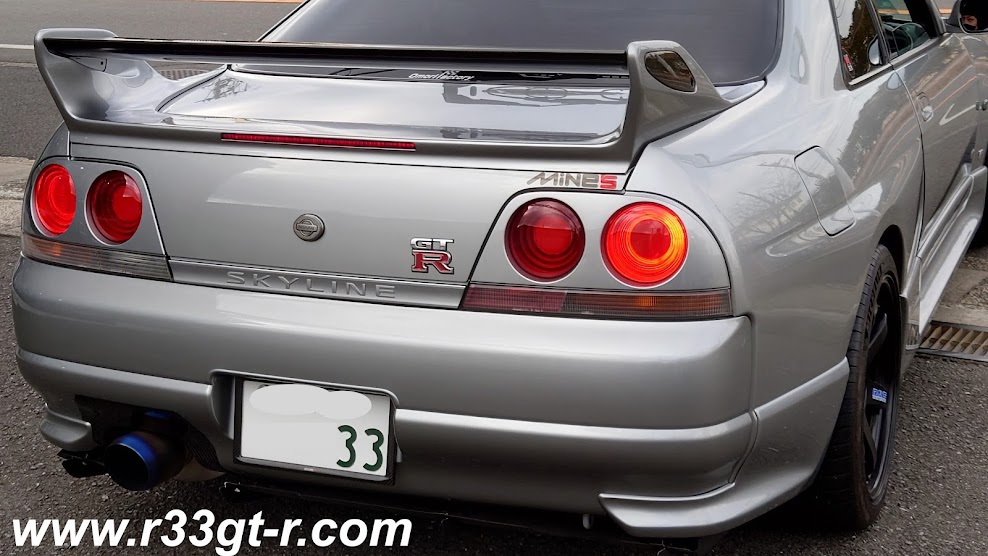When the 33 GT-R first came out over 25 years ago, the OEM tires were either the Bridgestone Expedia S-07 (on the V-specs) or the Bridgetsone Potenza RE010 (on the standard car).
Traditionally, the Nissan race cars of this era were on Bridgestones too.
 |
| I took this photo of the LM racing car at Nismo Festival 2017 |
 |
| Taken at Nissan Global Headquarters Gallery |
 |
| Also at the Gallery |
 |
| I took this photo at Nismo Festival 2017 - the Advan Sport is Yokohama's Maximum Performance Summer Tire |
 |
| Couldn't resist posting this, so clean! |
 |
| Next, I have to figure out what polymer coating they use... |
And yes, I've been on Yokohama Advans since I got my R35 brakes installed... back in 2011!
 |
| Metadata date is October 15, 2011!! |
But about 7 years ago, Michelin started making inroads with Nissan... witness their gigantic trailer parked at last year's Nismo Festival, for example.
 |
| The Super GT cars began wearing Michelins around 2013. |
 |
| The new e-dams Formula machine... wearing Michelins! |
And then suddenly Nismo started to use Michelin tires on their CRS cars too.
Interestingly, I found that on TireRack.com, they consider the RE71R and the Advans to be "Extreme Performance Summer Tires" ("Hyperfocused on extreme dry grip, but gives up wet traction, confort and life to get it") while the PS4S is a "Max Performance Summer Tire" (designed to "deliver the highest combination of dry and wet traction along with reasonable ride and treadwear").
In other words, the Extremes are for track/dry weather use, while the Max tires are for great all around use (except obviously snow and ice). Normally I would agree that, since I never drive the GT-R in the rain, I could focus and buy one of the Extremes. However, there were 2 things to also consider - what if I got caught in a downpour or end up on a road up in the mountains still wet from the day before, and second, is there a Max tire that has just as good dry performance as an Extreme tire?
Now, for those you who question my research at TireRack.com -while their categorization is useful, what I'm really interested in are the ratings by actual owners. Somewhat like how we check Customer Reviews on Amazon or feedback given in the App Store, I tend to disbelieve what the "experts" say - even in famous magazines or youTube channels - because most of the time those people are given some kind of financial incentive to not say anything negative about the products they review. The average consumer, however, is usually much more truthful because it's their experience and money. In fact I usually go to the negative reviews first, pissed off consumers are usually very informative (if not entertaining)! But I usually go along with what the majority say.
So first the customer experience on the RE71. Overwhelmingly, most people seem to buy these tires for track and/or autocross use. For those who do drive with these on an daily basis, these tires seem to not be as good in the wet as they are in the dry.
Second, what about the Advans? Very few reviews on the A052 but again the majority of reviews reflected track/autocross driving. Just in case I also checked out the reviews for the AD08R, the successor to the tires on my car, but the feedback was similar. And the overall rating, like the A052 and the RE71, showed only "good" and not "excellent" subjective wet performance.
Ok then what about the PS4S? Well first, this tire showed "excellent" in both wet and dry performance, but the reviews showed that overwhelmingly, this tire is not for the track. Some of the users who used this tire for the track had problems with premature wear, and some even outright mentioned the RE71 as a better tire on the track... and especially in the dry.
So in conclusion, the PS4S appears to be the best high performance street tire. And, given that I can currently get these tires at about half the price of the others, I can convince myself to go with them, even though I'll likely never drive in the rain, and I've been itching for a track day. If I ever get back to do a track day, I will have to mount some Advans or the RE71 (purchased as cheaply as possible) on my spare set of wheels (LMGT4s).
Incidentally, if pricing was comparable amongst all three tires, I would likely go with the Bridgestones, given their OEM association when the car first came out. Never mind that I don't take the car to the track these days and I don't drive it much (and when I do, and I wouldn't do so in the rain anyway). Just wearing JDM best might be good enough...
Stay tuned! Another post coming soon! Stay safe everyone.






























